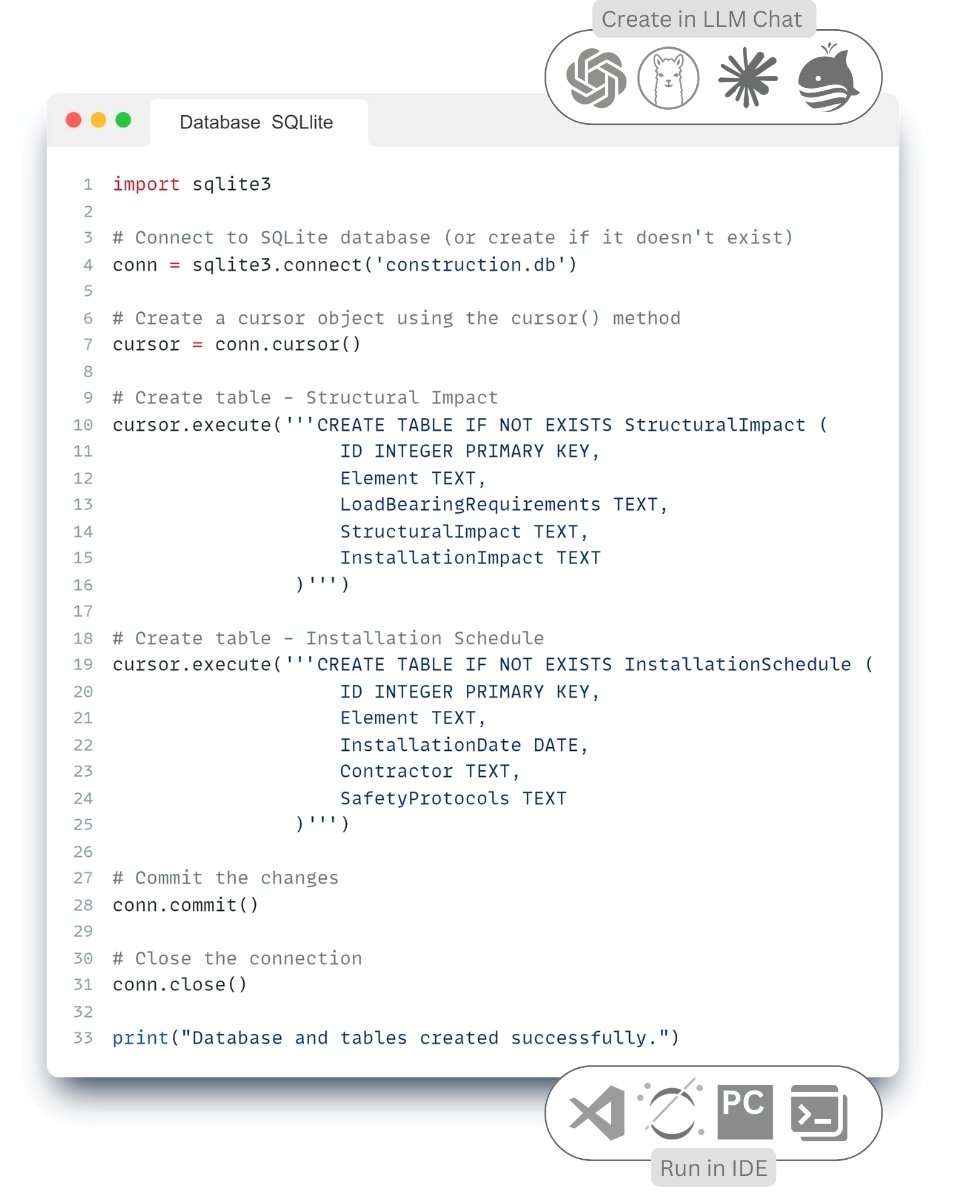Having a data model and description of entities through parameters, we are ready to create databases – storages, where we will store information coming after the structuring stage on specific processes.
Let’s try to create an example of a simple but functional database with a minimum amount of code using SQLite using the Python programming language as an example. Relational databases were discussed in detail in the chapter “Structured relational databases and SQL query language “.
SQLite is a lightweight, open source, embeddable, cross-platform database, supporting core SQL features. SQLite is widely used in CAD (BIM), ERP, EPM and is present in almost every smartphone.
Let’s ask the LLM model to create a small SQLlite database for us based on the physical model created above (Fig. 4.3-4) for the FEM (structural impact) and CPM (assembly schedule) systems.
- Send a text request to LLM chat (CHATGP, LlaMa, Mistral DeepSeek, Grok, Claude, QWEN or any other):
Create SQLlite databases for the Constructive Impact and Installation Schedule systems from the Fig. in the attachment (paste the schema as an image in the chat (Fig. 4.3-4)⏎
 |
This code for creating a database can be executed in the Python environment with support for SQLite, which is usually included in the standard Python environment. It can be run on any local Python machine capable of running scripts and creating files. Once run and executed, this code will create a file on your hard disk – a SQLite database named construction.db (similar to an Excel file with worksheets) that will contain the “Structural Impact” and “Installation Schedule” tables.
After creating a new construction.db database to these tables, data can be added to these tables via SQL _queries or import, which will allow you to start creating automatic data processing later. Data can be imported into the SQLite database from CSV files, Excel spreadsheets or exported from other databases and storages via API.
To establish sustainable data modeling and effective database management processes, a company needs a clearly defined strategy as well as coordination between technical and business teams. With disparate projects and multiple data sources, it is often difficult to ensure consistency, standardization and quality control at all levels. One key solution may be to create a dedicated Data Modeling Center of Excellence (COE) within the company.





















